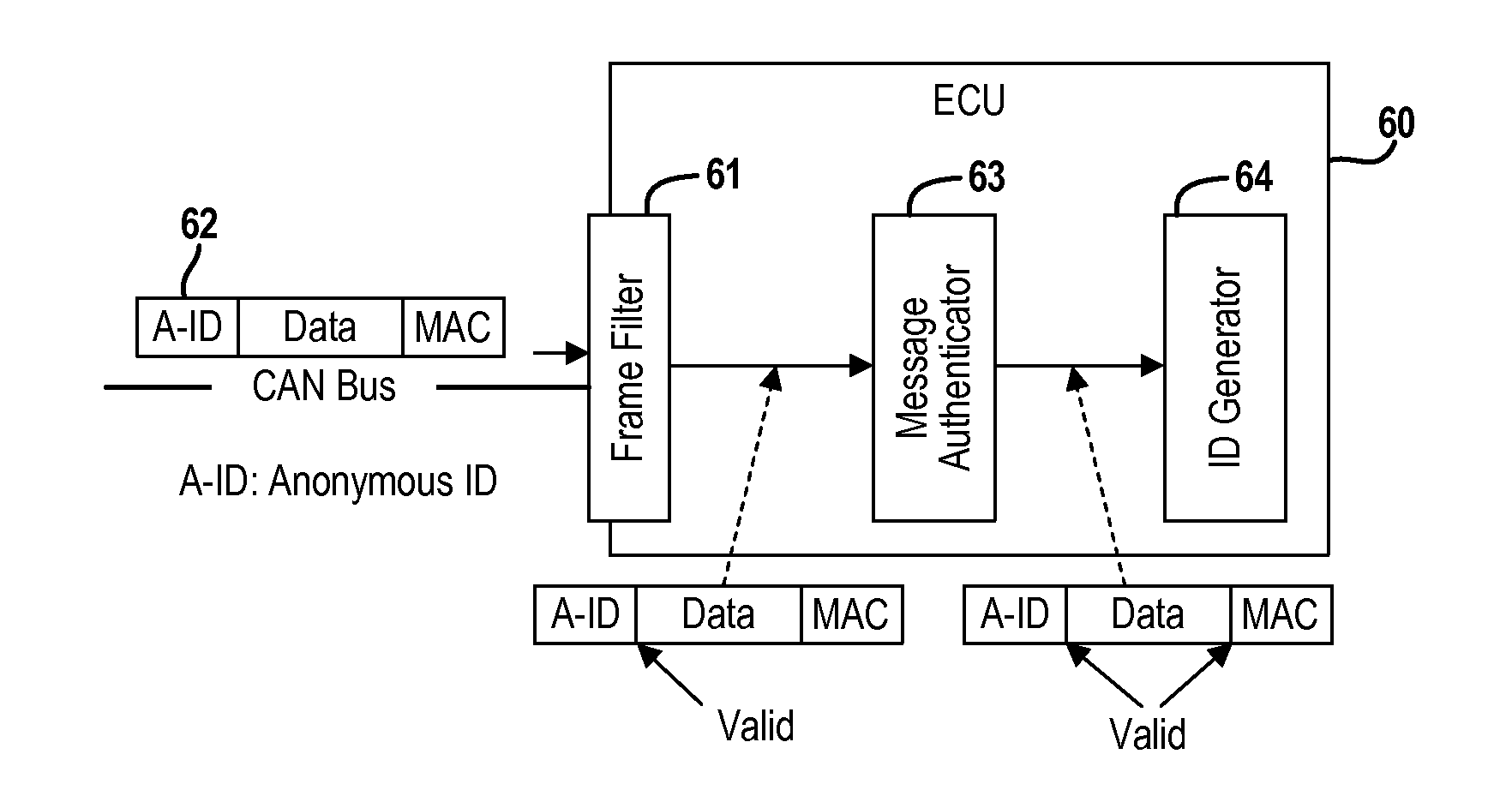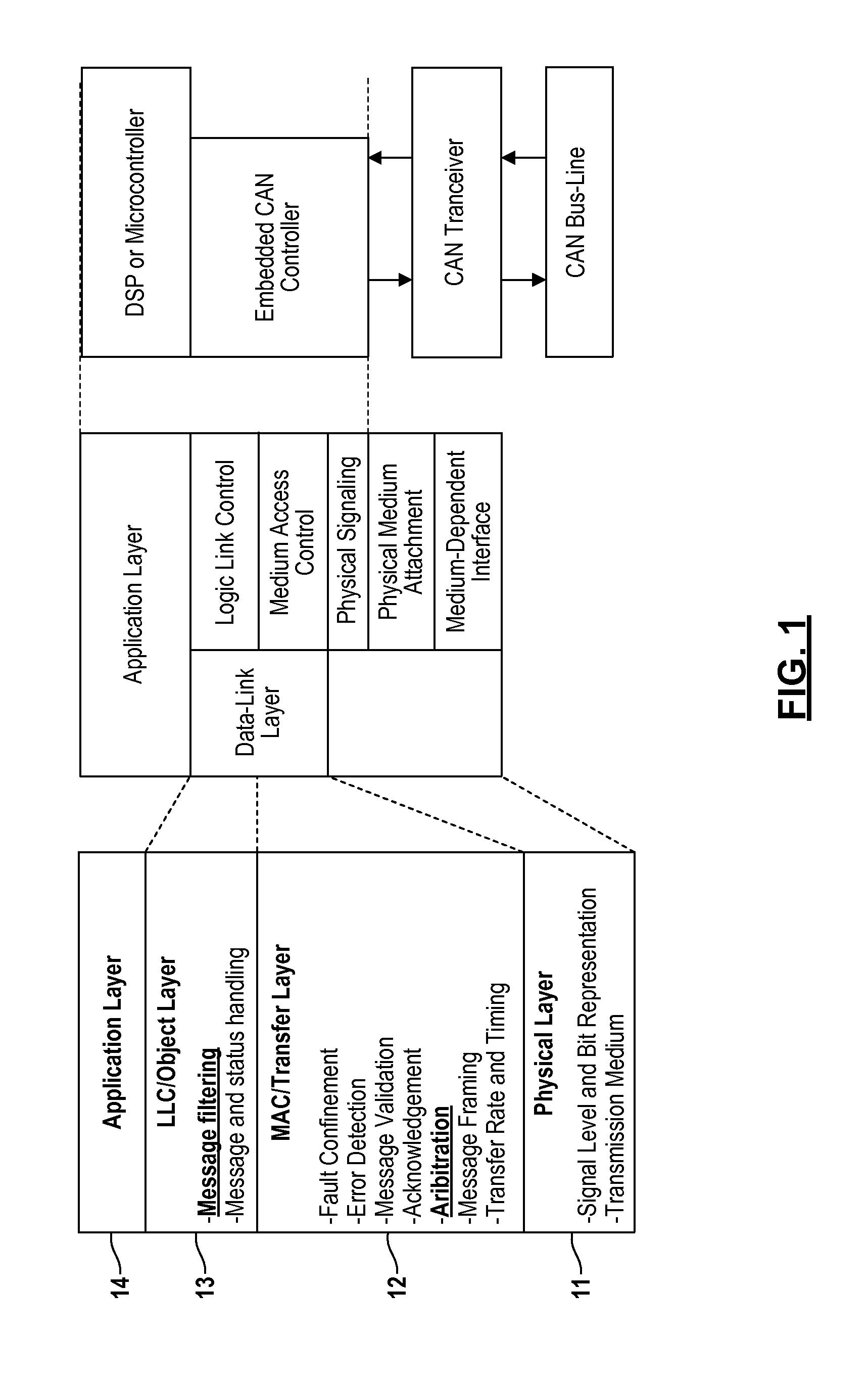Real-Time Frame Authentication Using ID Anonymization In Automotive Networks
a real-time frame authentication and automotive network technology, applied in digital transmission, wireless communication, transportation and packaging, etc., can solve the problems of not ensuring data authentication or privacy, becoming susceptible to various attacks, and accompanied by new security risks, so as to reduce the message authentication delay tm, reduce the delay, and reduce the overhead
- Summary
- Abstract
- Description
- Claims
- Application Information
AI Technical Summary
Benefits of technology
Problems solved by technology
Method used
Image
Examples
case 1
[0168] p=1000 ms. In this scenario, the attack proceeds with frames at a 1000 ms-interval on the 125 / 500 / 1000 kbps CAN bus. IA-CAN for the remote frame takes approximately 20 / 70 / 134 ms, while the general PA using MAC takes 4 / 16 / 31 seconds, exceeding the 1000 ms time-bound. Using IA-CAN for the data frame, assignment of 6-bit anonymous IDs takes 90 / 400 / 679 ms which is still far below the 1000 ms bound, while assigning 16-bit anonymous IDs still takes 30 / 70 / 156 ms.
case 2
[0169] p=5 ms. In this scenario, the attack proceeds with frames at a 5 ms-interval on the 125 / 500 / 1000 kbps CAN bus. IA-CAN for the remote frame takes approximately 1.7 / 2.4 / 3.2 ms, while the general PA using MAC takes 23 / 85 / 167 ms, which exceeds the 5 ms time-bound. Using IA-CAN for the data frame, assignment of 6-bit anonymous IDs takes 4.1 / 4.8 / 8.2 ms, while assigning 16-bit anonymous IDs still takes 2.8 / 4.6 / 5 ms.
[0170]Cases 2 show that the computation of IA-CAN for data frame when a small ID (6 bits) may exceed the time-bound on a high-speed bus because with a high probability, there will be collision from 26 bits. Thus, to avoid such an overhead, assigning more bits ID with idj,Y2, is recommended. In fact, 100% bus utilization with 100% bus occupation for one frame is unlikely in reality; the bus utilization is usually 30-40%.
[0171]In comparison, IA-CAN is very efficient, not incurring any additional notable runtime overhead for anonymous ID compared to previous models. Although...
PUM
 Login to View More
Login to View More Abstract
Description
Claims
Application Information
 Login to View More
Login to View More - R&D
- Intellectual Property
- Life Sciences
- Materials
- Tech Scout
- Unparalleled Data Quality
- Higher Quality Content
- 60% Fewer Hallucinations
Browse by: Latest US Patents, China's latest patents, Technical Efficacy Thesaurus, Application Domain, Technology Topic, Popular Technical Reports.
© 2025 PatSnap. All rights reserved.Legal|Privacy policy|Modern Slavery Act Transparency Statement|Sitemap|About US| Contact US: help@patsnap.com



